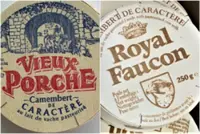Coffee pairs well with cheese, but the taste of both should complement each other rather than compete. — Photos: CHRISTIN KLOSE/dpa
Cheese and wine sounds like a perfect match. Yet red wines and wines matured in oak barrels don’t go at all well with cheese.
“The tannins don’t harmonise with the cheese,” says Alexandre Centeleghe, a Swiss wine expert.





